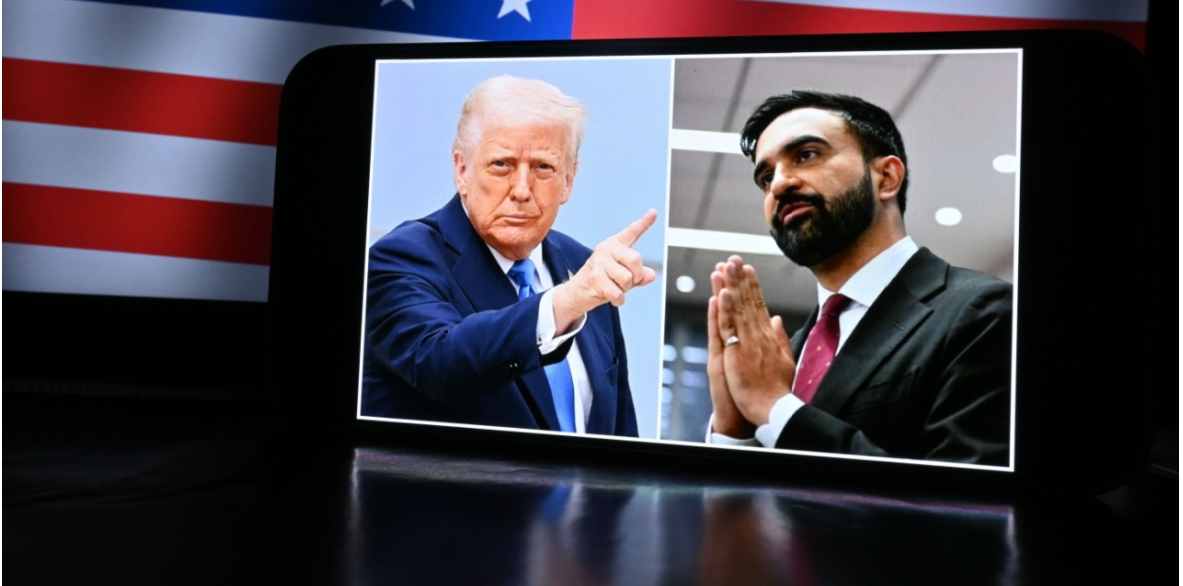What the Trump-Mamdani Meeting Reveals About American Leadership

Though their beliefs and styles are at odds, the president and the mayor of New York City showed that polarization need not prevent substantive discussion.
There are moments in American politics when a single image captures a deeper truth about the country—its divisions, its resilience, and its ability to bring adversaries into the same room when the national interest demands it. The recent meeting between President Donald Trump and newly elected New York Mayor Zohran Mamdani was one such moment. To some observers, it appeared improbable. Yet when the stakes are high, even sharp critics recognize the necessity of dialogue.

New York is not merely a city—it is America’s gateway to the world and vice versa. It is a place where ambition, diversity, and reinvention define daily life, shaping global perceptions more than any other American metropolis. Trump emerged from this competitive landscape as a builder and dealmaker; Mamdani rose from its activist and ideological currents. Their paths diverge sharply, yet both bear the unmistakable stamp of the Big Apple. Understanding New York’s unique political and cultural gravity explains why two figures with opposing visions could still sit across from each other when the city’s—and the nation’s—interests required it.
Donald Trump’s Foreign-Policy Legacy: Strategic Leadership vs. Populist Inexperience
What most clearly separates President Trump from Mayor Mamdani is not personality, but experience. Trump governed with a strategic instinct shaped by decades of international dealings, and his foreign-policy legacy reflects a willingness to challenge entrenched assumptions and reshape global alignments.
The Abraham Accords remain a defining achievement of his presidency—an agreement that broke through decades of diplomatic paralysis in the Middle East. Rather than accepting the long-held belief that regional peace must wait on a single unresolved conflict, Trump pursued a realignment driven by shared interests, economic opportunity, and security cooperation. The accords lowered regional tensions and opened new pathways for partnership, marking one of the most significant American diplomatic initiatives of the twenty-first century.
This breakthrough was not incidental. It reflected a coherent vision carried out by a disciplined and capable team. Jared Kushner, the principal architect, approached the region with a pragmatic mindset and a willingness to test ideas that traditional diplomacy had dismissed. Around the president stood seasoned voices—Marco Rubio, Sebastian Gorka, and John Ratcliffe—who shared a belief that American strength, clarity, and deterrence are essential to global stability. Together, they advanced a foreign policy built on confronting terrorism, pressuring adversaries, and reinforcing the strategic partnerships that underpin American influence.
This record stands in sharp contrast to Mamdani’s profile. His political appeal rests on energy and populist rhetoric, but his experience remains rooted in activism rather than international engagement. While his comments may energize supporters seeking dramatic change, they do not offer a roadmap for navigating complex geopolitical realities. Where Trump built alliances, disrupted stalemates, and confronted threats with resolve, Mamdani has yet to demonstrate the judgment required to operate on a global stage.
Donald Trump’s and Zohran Mamdani’s Two Political Philosophies
Against this backdrop, the Trump-Mamdani meeting becomes more than a symbolic encounter. It is a contrast between two political philosophies: one grounded in strategic realism, the other in ideological passion. For Mamdani, sitting across from a president whose policies reshaped the Middle East and strengthened American security could be an instructive moment. Leadership—especially in a city as consequential as New York—requires more than confrontational language. It demands a vision that is realistic, achievable, and conscious of global consequences.
For Trump, the meeting underscored his longstanding belief that engagement does not require ideological alignment. The ability to sit with critics, rivals, or political newcomers has long defined American leadership. It is also what distinguishes experience from activism and results from rhetoric.
Trump and Mamdani represent two very different visions for the United States. One is built on global strategy, clarity of purpose, and an assertive defense of national interests; the other is driven by domestic populism and ideological momentum. Yet their encounter demonstrates that even in an era of deep polarization, dialogue remains possible when the responsibility of leadership demands it.
As the United States confronts global instability, domestic division, and rising strategic competition, this capacity for engagement will be indispensable. New York City remains at the center of that test.
The Trump-Mamdani meeting did not signal unity, but it signaled something equally important: the American tradition of confronting differences, not by retreating from them, but by facing them directly.
- Questions and Answers
- Opinion
- Motivational and Inspiring Story
- Technology
- Live and Let live
- Focus
- Geopolitics
- Military-Arms/Equipment
- Sécurité
- Economy
- Beasts of Nations
- Machine Tools-The “Mother Industry”
- Art
- Causes
- Crafts
- Dance
- Drinks
- Film/Movie
- Fitness
- Food
- Jeux
- Gardening
- Health
- Domicile
- Literature
- Music
- Networking
- Autre
- Party
- Religion
- Shopping
- Sports
- Theater
- Health and Wellness
- News
- Culture

